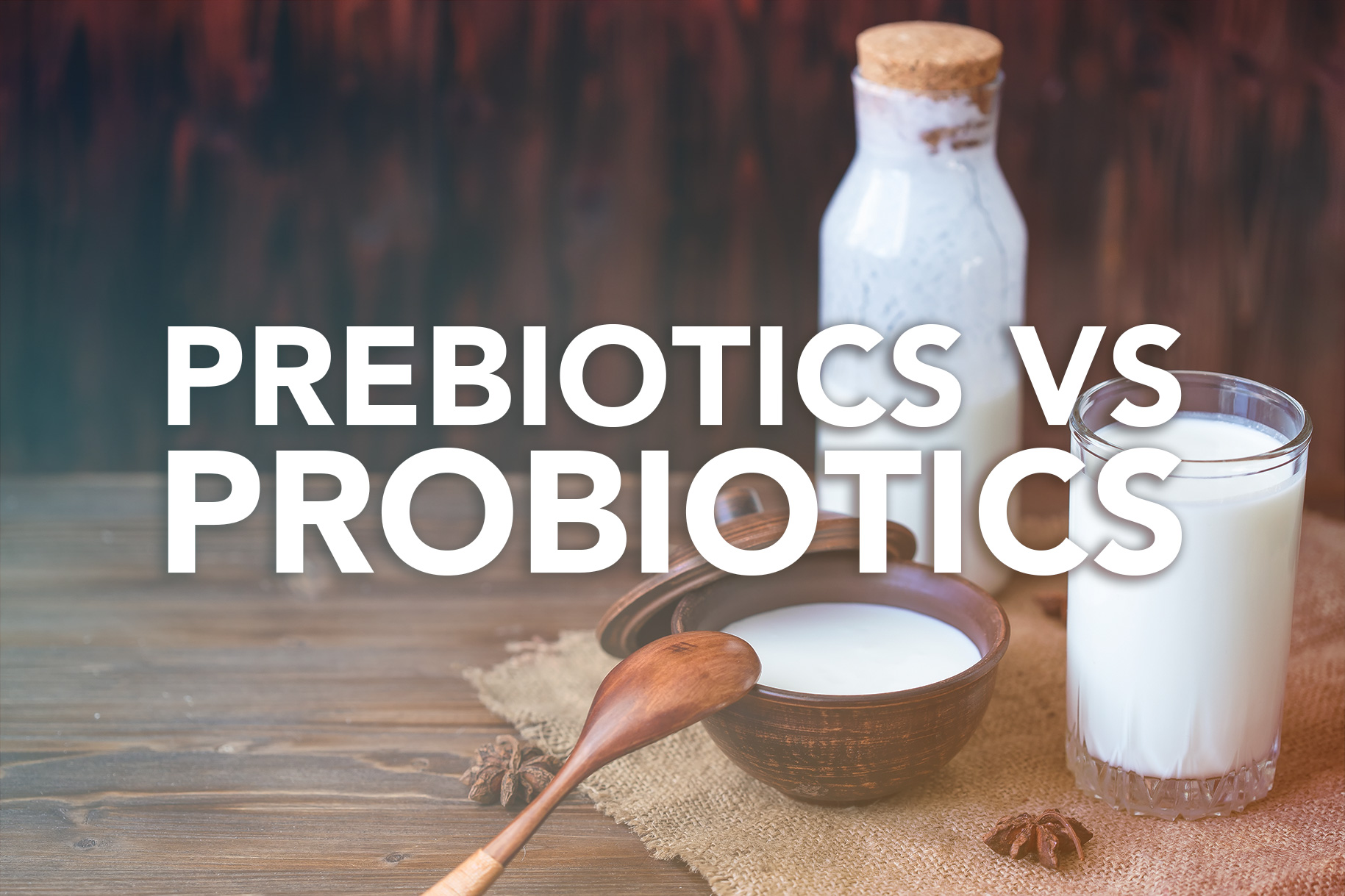Prebiotics vs Probiotics
Posted by Dani Kinn (@dkin1015) on Aug 6th 2019
Although prebiotics and probiotics sound very similar, these supplements have very different roles in the digestive system. Probiotics are bacteria that live naturally in your body and their role is to help the intestines break down food. Let’s break down each one and go into a little more depth. Prebiotics are made up of carbohydrates that your body is unable to digest. They serve as food for the probiotic bacteria that goes into your body.
Probiotics
Many types of bacteria are classified as probiotics, but the majority come from two different groups: Lactobacillus and Bifidobacterium. Lactobacillus is the most common probiotic and is found in yogurt and other fermented carbohydrates. It can help with diarrhea and can also help with people who cannot digest lactose. Bifidobacterium are found in some dairy products. It can help ease symptoms of irritable bowel syndrome. Naturally found in the large intestines, bifidobacteria fight harmful bacteria in the intestines, prevent constipation, and help boost the immune system. It can also help reduce intestinal concentrations of certain carcinogenic enzymes.
Probiotics can come in liquid or powder form. They usually need to be kept in the refrigerator to keep bacteria contained in them alive and ready to reproduce. A study in 2012 revealed that 4 million adults used probiotics for health benefits. Every probiotic is different because of the variations in the bacteria strains. Not all probiotics will work the same for you, and not everyone needs to take one. Make sure you look for a dairy-free probiotic if you are lactose intolerant avoid any probiotics with Candida if you have a yeast overgrowth.
Prebiotics
Prebiotics don’t actually contain bacteria. They act as fuel to help bacteria grow. All prebiotics are a type of dietary fiber. Chicory root, bananas, and asparagus are great sources of prebiotics that are good for gut bacteria. Other sources include onions, garlic, legumes, and artichokes. Prebiotics haven’t been found to be very beneficial by themselves. Prebiotics and probiotics used together is another story. When a food source contains both prebiotics and probiotics, the combination is called a synbiotic. Studies have shown that prebiotics and probiotics are effective for treating irritable bowel syndrome, allergic disorders, and the common cold. They have also been suggested as treatment for obesity and are being explored as a way to prevent cancer. Lastly, there is promising research to treat inflammatory arthritis.
The Centers for Disease Control and Prevention state that prebiotics and probiotics are generally safe, however side effects can include constipation, gas, loose stool, loss of appetite, bloating, and acid reflux. Allergic reactions are also always a possibility. If you break out in hives or experience extreme pain after ingesting prebiotics or probiotics, call your doctor as soon as possible.
+ Share
